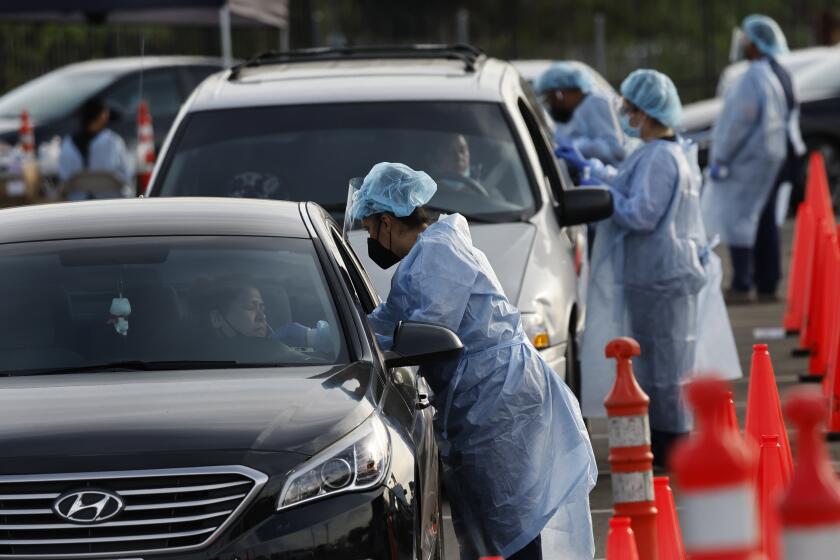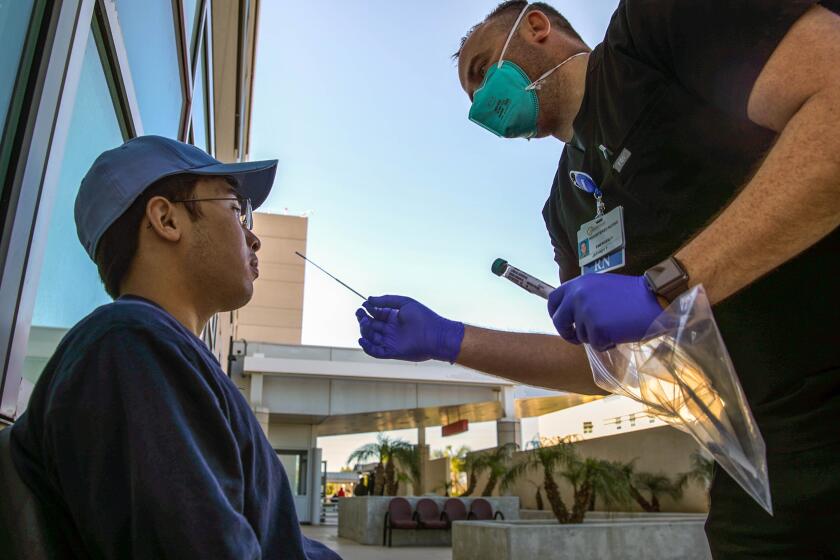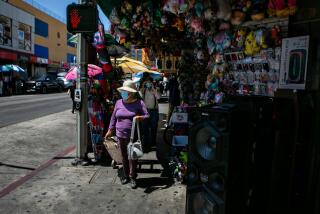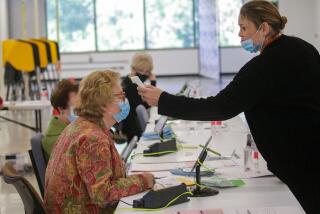Optimism at L.A. County’s nursing homes as coronavirus surge declines
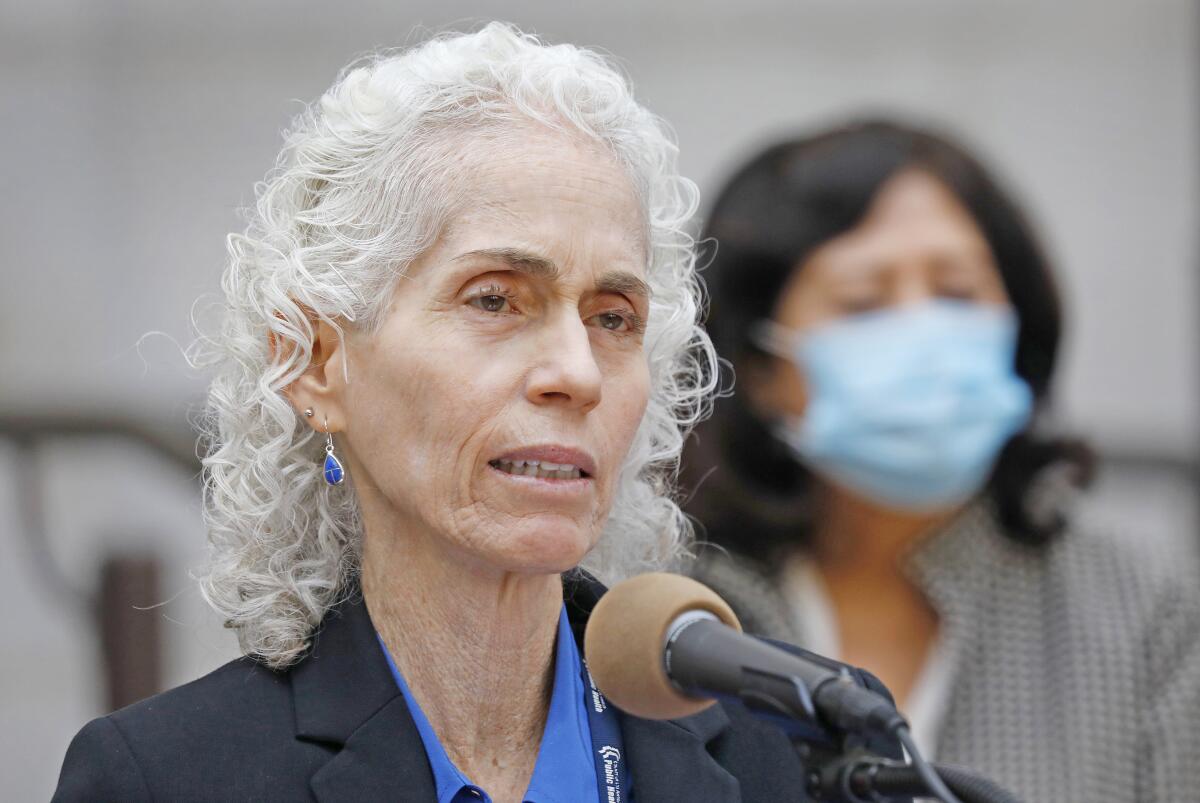
- Share via
Los Angeles County’s nursing homes have observed an extraordinary increase in coronavirus case rates during the Omicron surge — reaching levels exceeding even last winter’s wave — but that unprecedented torrent of infections hasn’t been matched by a record-high number of daily COVID-19 deaths, county health data show.
The county has instead observed a relatively small increase in daily COVID-19 deaths at nursing homes during the Omicron surge, officials said. And new daily coronavirus cases have already started to drop.
As of mid-January, L.A. County was tallying a daily COVID-19 death rate of 20 fatalities for every 100,000 nursing home residents. That’s about one-fifth of the peak of last winter’s surge, and roughly one-fourth the rate of the pandemic‘s early days in spring 2020, according to figures presented by L.A. County Public Health Director Barbara Ferrer.
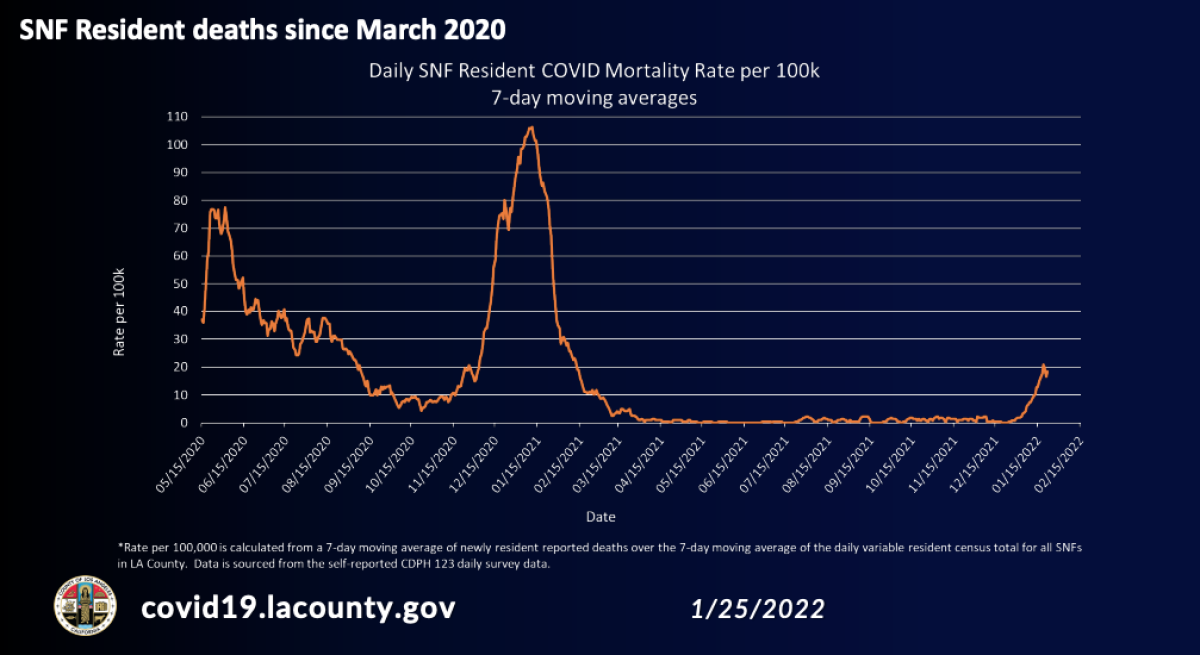
“The extraordinarily high case rate has not caused a similar high increase in deaths among residents compared to our previous surges,” Ferrer said. “We attribute these lower numbers to very high vaccination rates amongst nursing home residents.”
Coronavirus case rates among nursing home residents and workers have already started to decline.
Between Jan. 17 and 23, new coronavirus cases dropped by 14% among residents and 30% among workers compared with the prior week.
In Mission Hills, the latest wave swiftly began to hit staffers at Ararat Nursing Facility soon after Christmas, said its executive director, Margarita Kechichian. At one point, about 10% of its workforce — roughly 30 employees — was absent, she said.
California has reported more than 8 million coronavirus cases since the pandemic began, or 1 out of every 5 residents testing positive at some point.
As of Tuesday, only two or three employees were out, Kechichian said. Several residents tested positive for the coronavirus during the surge, but “we were very fortunate and happy to see that everybody has already recovered,” and all the residents recently tested negative, Kechichian said.
By Tuesday, the Mission Hills facility had already broken down its COVID-19 unit — a designated area for patients who tested positive — and hadn’t had to use it for more than a week, she added.
Kechichian attributed the milder impact from this wave, in part, to the fact that all employees are vaccinated and the majority have gotten booster shots.
“It came on so fast,” she said of the Omicron wave. “But it already is kind of fizzling out.”
The Omicron surge has peaked, rather unevenly, in California. But there’s one wrinkle — the emergence of a subtype called BA.2.
According to county data, 91% of nursing home residents are fully vaccinated and 82% of those eligible for boosters have gotten the additional shot.
Among nursing home workers, 97% are fully vaccinated; 65% were boosted as of early January. Ferrer expected more workers to get their booster as a deadline approaches.
“With this new requirement for staff to be fully boosted by Feb. 1, more staff have been coming in and getting their booster doses,” Ferrer said. “So we anticipate by the end of this month, we’ll have very high booster numbers as well among staff.”
L.A. has not cited any businesses for failing to check customers’ COVID vaccination status, opting for a grace period that runs out in a few days.
Unlike the first year of the pandemic, when nursing home staff were also dying of COVID-19, there hasn’t been a single nursing home worker death recorded thus far in the winter surge.
“The high vaccination rates among staff are responsible for this very low death rate among our nursing home staff,” Ferrer said at last week’s county Board of Supervisors meeting.
Shortly before Christmas, Gov. Gavin Newsom announced California would mandate boosters for all healthcare workers. While L.A. County’s deadline is Tuesday, the state recently extended its deadline to March 1.
“The data supports other evidence that has been shared nationally by the CDC on the importance of booster doses in reducing rates of infection, hospitalizations and deaths,” the county Department of Public Health said in a statement.
More to Read
Sign up for Essential California
The most important California stories and recommendations in your inbox every morning.
You may occasionally receive promotional content from the Los Angeles Times.
